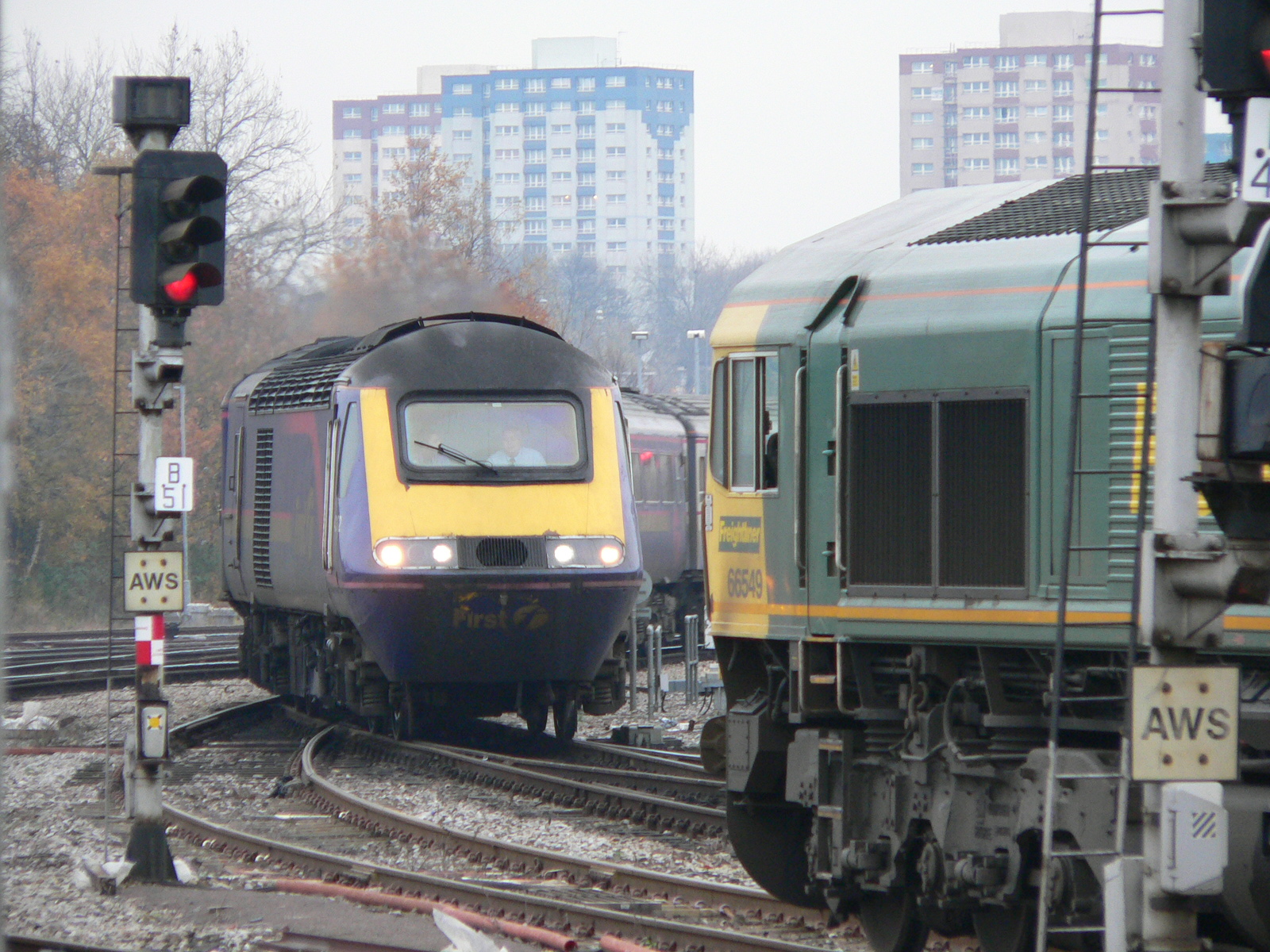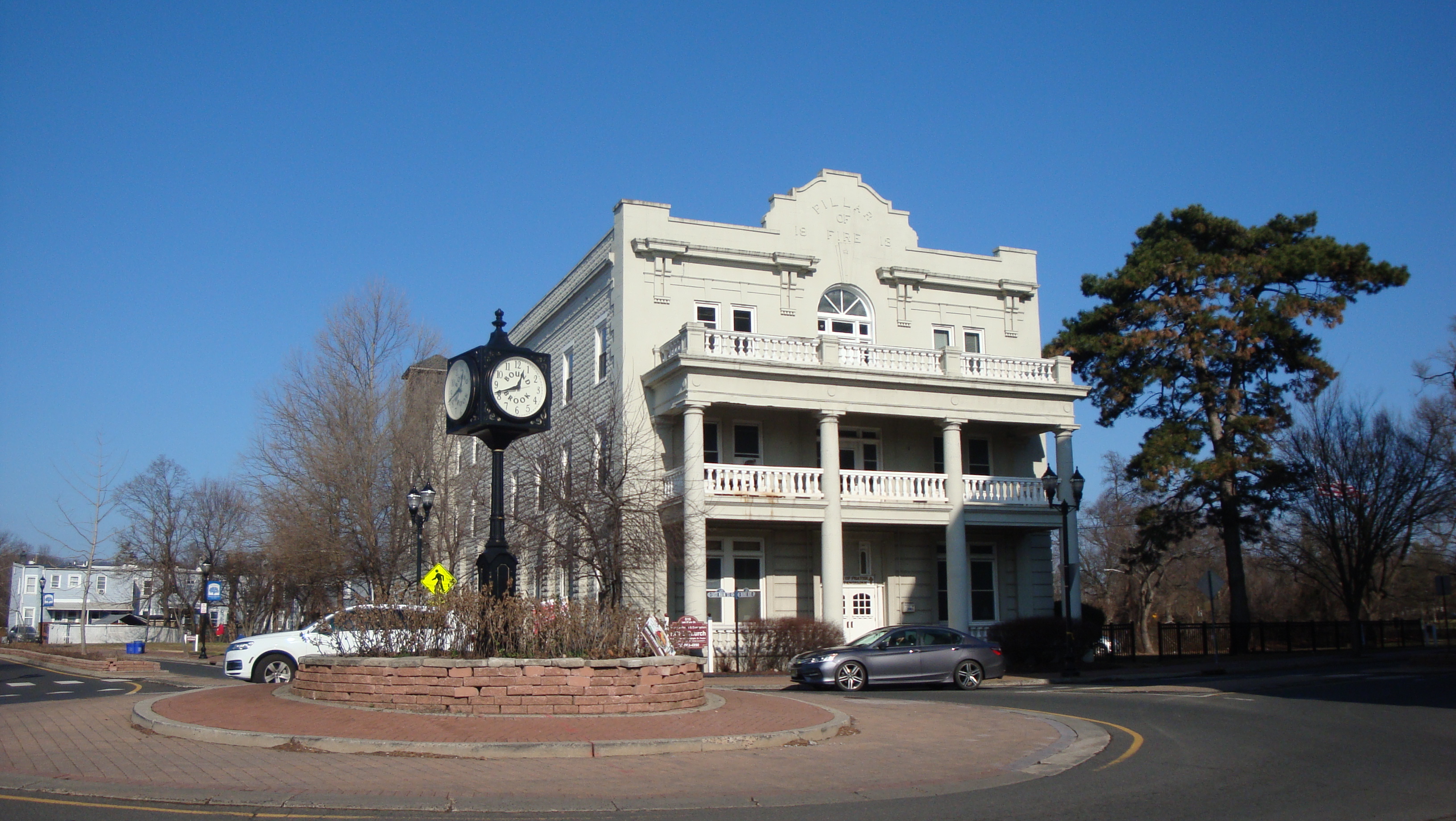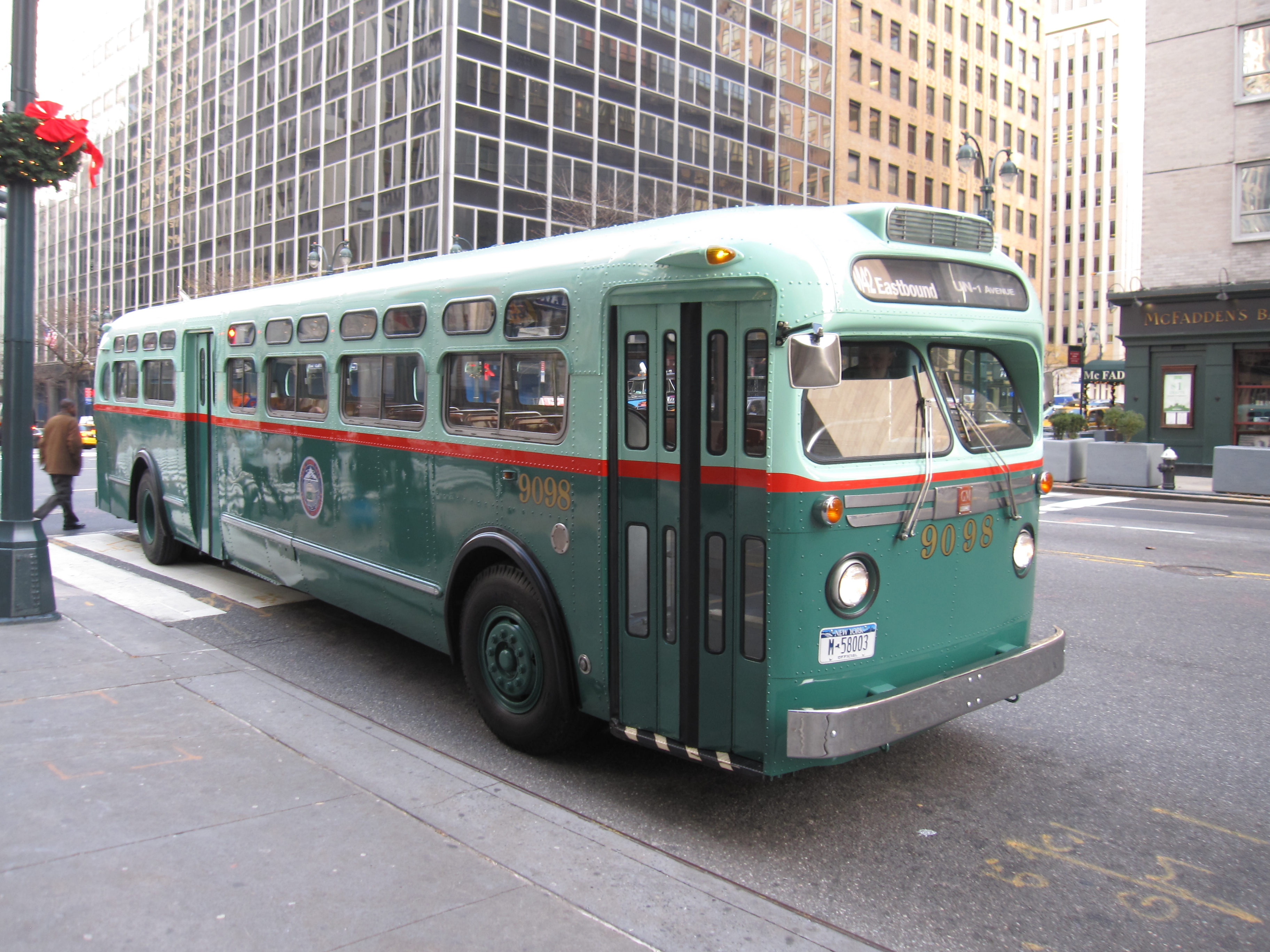 |
Interlocking
In railway signalling, an interlocking is an arrangement of signal apparatus that prevents conflicting movements through an arrangement of tracks such as junctions or crossings. In North America, a set of signalling appliances and tracks interlocked together are sometimes collectively referred to as an ''interlocking plant'' or just as an ''interlocking''. An interlocking system is designed so that it is impossible to display a signal to proceed unless the route to be used is proven safe. Interlocking is a safety measure designed to prevent signals and points/switches from being changed in an improper sequence. For example, interlocking would prevent a signal from being changed to indicate a diverging route, unless the corresponding points/switches had been changed first. In North America, the official railroad definition of interlocking is: "''An arrangement of signals and signal appliances so interconnected that their movements must succeed each other in proper sequence''". ... [...More Info...] [...Related Items...] OR: [Wikipedia] [Google] [Baidu] |
|
Union Switch & Signal
Union Switch & Signal (commonly referred to as US&S) was an American company based in Pittsburgh, Pennsylvania, which focused on railway signaling equipment, systems and services. The company was acquired by Ansaldo STS (from 2015, Hitachi Rail STS) in 1988, operating as a wholly-owned company until January 2009, when US&S was renamed "Ansaldo STS USA" to operate as a subsidiary of Ansaldo in the Americas and Asia.Ansaldo STS USA on Ansaldo website (archived, March 8, 2009) History Early years founded Union Switch & Signal Inc. in 1881, consolidating t ...[...More Info...] [...Related Items...] OR: [Wikipedia] [Google] [Baidu] |
|
 |
Railway Signalling
Railway signalling (), or railroad signaling (), is a system used to control the movement of railway traffic. Trains move on fixed rails, making them uniquely susceptible to collision. This susceptibility is exacerbated by the enormous weight and inertia of a train, which makes it difficult to quickly stop when encountering an obstacle. In the UK, the Regulation of Railways Act 1889 introduced a series of requirements on matters such as the implementation of interlocked block signalling and other safety measures as a direct result of the Armagh rail disaster in that year. Most forms of train control involve movement authority being passed from those responsible for each section of a rail network (e.g. a signalman or stationmaster) to the train crew. The set of rules and the physical equipment used to accomplish this determine what is known as the ''method of working'' (UK), ''method of operation'' (US) or ''safe-working'' (Aus.). Not all these methods require the use of p ... [...More Info...] [...Related Items...] OR: [Wikipedia] [Google] [Baidu] |
|
Westinghouse Rail Systems
Westinghouse Rail Systems Ltd (formerly ''Westinghouse Signals Ltd'') was a British supplier of railway signalling and control equipment to the rail industry worldwide. Its head office was in Chippenham, Wiltshire, where it manufactured a variety of mechanical and electrical/electronic railway signalling equipment. It had six other UK offices in Croydon, York, Birmingham, Crawley, Swanley and Glasgow. It also had a number of overseas offices, particularly in the Far East, including Melbourne. Westinghouse was the largest signalling design and control engineering company within the UK. Its largest contract was awarded in 2004: a ten-year £850m re-signalling of eight London Underground lines for the Metronet Public-Private Partnership. The company was owned by Invensys plc before being sold to Siemens in 2013. It is now part of Siemens Mobility, the Westinghouse name having been dropped. History Westinghouse Rail Systems' origin is in the signals division of Westinghouse ... [...More Info...] [...Related Items...] OR: [Wikipedia] [Google] [Baidu] |
|
 |
Railway Signal
A railway signal is a visual display device that conveys instructions or provides warning of instructions regarding the driver's authority to proceed. The driver interprets the signal's indication and acts accordingly. Typically, a signal might inform the driver of the speed at which the train may safely proceed or it may instruct the driver to stop. Application and positioning of signals Originally, signals displayed simple stop or proceed indications. As traffic density increased, this proved to be too limiting and refinements were added. One such refinement was the addition of distant signals on the approach to stop signals. The distant signal gave the driver warning that they were approaching a signal which might require a stop. This allowed for an overall increase in speed, since train drivers no longer had to drive at a speed within sighting distance of the stop signal. Under timetable and train order operation, the signals did not directly convey orders to the tr ... [...More Info...] [...Related Items...] OR: [Wikipedia] [Google] [Baidu] |
 |
John Saxby
John Saxby (17 August 1821 – 22 April 1913) was an English engineer from Brighton, noted for his work in railway signalling and the invention of the interlocking system of points and signals. He was later a partner in the firm Saxby and Farmer. He is regarded as "the father of modern signalling".Saxby & Farmer on Polunnio Biography Saxby was born at Brighton on 17 August 1821 and in 1834 was apprenticed at the age of thirteen to a carpenter and joiner. In 1840 he was employed as a carpenter at the of the[...More Info...] [...Related Items...] OR: [Wikipedia] [Google] [Baidu] |
 |
Junction (rail)
A junction, in the context of rail transport, is a place at which two or more rail routes converge or diverge. The physical connection between the tracks of the two routes (assuming they are of the same gauge) is provided by Railroad switch, turnouts (US: railroad switch, switches) and railway signalling, signalling. Overview In a simple case where two routes with one or two tracks each meet at a junction, a fairly simple layout of tracks suffices to allow trains to transfer from one route to the other. More complicated junctions are needed to permit trains to travel in either direction after joining the new route – for example by providing a triangular track layout.In this latter case, the three points of the triangle may be given different names, for example using points of the compass as well as the name of the overall place. Rail transport operations refer to railway station, stations that lie on or near a railway junction as a ''junction station''. In the UK it is customa ... [...More Info...] [...Related Items...] OR: [Wikipedia] [Google] [Baidu] |
 |
Bound Brook, New Jersey
Bound Brook is a borough in Somerset County, in the U.S. state of New Jersey, located along the Raritan River. As of the 2020 United States census, the borough's population was 11,988, an increase of 1,586 (+15.2%) from the 2010 census count of 10,402, which in turn reflected an increase of 247 (+2.4%) from the 10,155 counted in the 2000 census, . Bound Brook was originally incorporated as a town by an act of the New Jersey Legislature on March 24, 1869, within portions of Bridgewater Township. On February 11, 1891, it was reincorporated as a borough, based on the results of a referendum held on the previous day.Snyder, John P''The Story of New Jersey's Civil Boundaries: 1606–1968'' Bureau of Geology and Topography; Trenton, New Jersey; 1969. p. 222. Accessed October 25, 2012. History The area was first settled in 1681 and a community was established near the Bound Brook stream of the same name, which flows into the Raritan River via the Green Brook on the eastern sid ... [...More Info...] [...Related Items...] OR: [Wikipedia] [Google] [Baidu] |
 |
Reading Company
The Reading Company ( ) was a Philadelphia-headquartered railroad that provided passenger and freight transport in eastern Pennsylvania and neighboring states from 1924 until its acquisition by Conrail in 1976. Commonly called the Reading Railroad and logotyped as Reading Lines, the Reading Company was a railroad holding company for most of its existence, and a single railroad in its later years. It operated service as Reading Railway System and was a successor to the Philadelphia and Reading Railway Company, founded in 1833. Until the decline in anthracite shipments from the Coal Region in Northeastern Pennsylvania following World War II, it was one of the most prosperous corporations in the United States. Enactment of the federally-funded Interstate Highway System in 1956 led to competition from the modern trucking industry. They used the Interstates for short-distance transportation of goods, which compounded the company's competition for freight business, forcing it into ba ... [...More Info...] [...Related Items...] OR: [Wikipedia] [Google] [Baidu] |
 |
Lehigh Valley Railroad
The Lehigh Valley Railroad was a railroad in the Northeastern United States built predominantly to haul anthracite, anthracite coal from the Coal Region in Northeastern Pennsylvania to major consumer markets in Philadelphia, New York City, and elsewhere. On April 21, 1846, the railroad was authorized to provide freight transportation of passengers, goods, wares, merchandise, and minerals in Pennsylvania. On September 20, 1847, the railroad was incorporated and established, initially called the Delaware, Lehigh, Schuylkill and Susquehanna Railroad Company. On January 7, 1853, the railroad's name was changed to Lehigh Valley Railroad. It was sometimes known as the Route of the Black Diamond; black diamond is a slang word for anthracite, the high-end type of Pennsylvania coal that it initially transported by boat down the Lehigh River. The Lehigh Valley Railroad's original and primary route between Easton, Pennsylvania, Easton and Allentown, Pennsylvania, Allentown was built i ... [...More Info...] [...Related Items...] OR: [Wikipedia] [Google] [Baidu] |
|
Des Plaines Interlocking Tower
Des is a masculine given name, mostly a short form (hypocorism) of Desmond. People named Des include: People * Des Buckingham, English football manager * Des Corcoran, (1928–2004), Australian politician * Des Dillon (other), several people * Des Hasler (born 1961), Australian rugby league player-coach * Desmond Des Kelly (born 1965), British journalist * Desmond Des Lynam Desmond Michael Lynam (born 17 September 1942) is an Irish-born British television and radio presenter. In a broadcasting career spanning more than forty years, he has hosted television coverage of many of the world's major sporting events, pr ... (born 1942), British television presenter * Desmond Des Lyttle (born 1971), English footballer * Des McLean, Scottish stand-up comedian, actor and presenter * Desmond Des O'Connor (1932–2020), British entertainer * Des O'Connor, Australian rugby league player in the 1970s * Desmond Des O'Grady (born 1953), Irish retired Gaelic footballer ... [...More Info...] [...Related Items...] OR: [Wikipedia] [Google] [Baidu] |
|
 |
New York City Transit Authority
The New York City Transit Authority (also known as NYCTA, the TA, or simply Transit, and branded as MTA New York City Transit) is a New York state public-benefit corporations, public-benefit corporation in the U.S. state of New York (state), New York that operates public transportation in New York City. Part of the Metropolitan Transportation Authority, the busiest and largest transit system in North America, the NYCTA has a daily ridership of 8million trips (over 2.5billion annually). The NYCTA operates the following systems: * New York City Subway, a rapid transit system serving Manhattan, the Bronx, Brooklyn, and Queens * Staten Island Railway, a rapid transit line on Staten Island (operated by the subsidiary Staten Island Rapid Transit Operating Authority) * New York City Bus, an extensive bus network serving all five boroughs (operated by the subsidiary MTA Regional Bus Operations) Name As part of establishing a common corporate identity, the Metropolitan Transportation Aut ... [...More Info...] [...Related Items...] OR: [Wikipedia] [Google] [Baidu] |